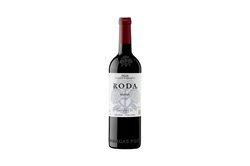Fresh hake fillets (whole piece)
Fresh hake fillets (whole piece)
Fresh hake fillets (whole piece)
Temporarily out of stock
 ¡ Comprando este producto consigues 8.5 menttos !
¡ Comprando este producto consigues 8.5 menttos !
Valoración: 4.6
Minimum order amount:
49.00 €
49.00 €
Shipping time: 24 - 72 h
Free shipping
Recommended

Shipping only to the Madrid Community
It is a saltwater fish characterized by having a elongated body with a large head. The mouth has strong pointed teeth. It has two fins on the sides. The first one comes out of the head and the second one is very separated from the first one. It is gray with a touch of blue. But the sides are silver and white on its belly. It is a white fish that comes in saltwater. It usually feeds on smaller fish. When they are young fish, they are known as "pijotas", "pescadillas", "merlucillas" or "cariocas".
Properties and benefits
Pescadilla is a great source of minerals such as selenium and phosphorus. It helps reduce cholesterol levels in the blood. It improves concentration and memory thanks to the amounts of minerals such as zinc or phosphorus it contains. Pescadilla strengthens bones thanks to vitamin D. It contains proteins that help nourish muscles. It is a fish that is easily digested.
Nutritional value per 100g
Calories: 73.90 kcal
Fat: 0.80g
Cholesterol: 56.80mg
Sodium: 100mg
Proteins: 16.68g
Vitamin B12: 1ug
Calcium: 43.40mg
Iron: 0.77mg
Vitamin B3: 7.30mg
Storage and tips
It is important to keep it refrigerated. If you are going to consume it within two days, it will last in the fridge. If not, you should freeze it. If you are going to freeze it, it is ideal to wash it well, dry it well, sprinkle salt on it and finally wrap it in plastic wrap and aluminum foil. It will last up to a maximum of 4 months.
Recipe and uses in the kitchen
We can cook pescadilla fillets either grilled with a drizzle of oil or in the oven with caramelized onion and cream of potatoes and leeks: Cut 4 onions into julienne and caramelize them. Approximately about 25 minutes, until they are golden. Make the leek and potato cream. Place the fish in a baking tray, season with salt and pepper and add a drizzle of oil and white wine. Bake for 8 minutes. Once ready, serve the fish with the caramelized onion on top.
Translated automatically
More information
Shipping only to the Madrid Community
It is a saltwater fish characterized by having a elongated body with a large head. The mouth has strong pointed teeth. It has two fins on the sides. The first one comes out of the head and the second one is very separated from the first one. It is gray with a touch of blue. But the sides are silver and white on its belly. It is a white fish that comes in saltwater. It usually feeds on smaller fish. When they are young fish, they are known as "pijotas", "pescadillas", "merlucillas" or "cariocas".
Properties and benefits
Pescadilla is a great source of minerals such as selenium and phosphorus. It helps reduce cholesterol levels in the blood. It improves concentration and memory thanks to the amounts of minerals such as zinc or phosphorus it contains. Pescadilla strengthens bones thanks to vitamin D. It contains proteins that help nourish muscles. It is a fish that is easily digested.
Nutritional value per 100g
Calories: 73.90 kcal
Fat: 0.80g
Cholesterol: 56.80mg
Sodium: 100mg
Proteins: 16.68g
Vitamin B12: 1ug
Calcium: 43.40mg
Iron: 0.77mg
Vitamin B3: 7.30mg
Storage and tips
It is important to keep it refrigerated. If you are going to consume it within two days, it will last in the fridge. If not, you should freeze it. If you are going to freeze it, it is ideal to wash it well, dry it well, sprinkle salt on it and finally wrap it in plastic wrap and aluminum foil. It will last up to a maximum of 4 months.
Recipe and uses in the kitchen
We can cook pescadilla fillets either grilled with a drizzle of oil or in the oven with caramelized onion and cream of potatoes and leeks: Cut 4 onions into julienne and caramelize them. Approximately about 25 minutes, until they are golden. Make the leek and potato cream. Place the fish in a baking tray, season with salt and pepper and add a drizzle of oil and white wine. Bake for 8 minutes. Once ready, serve the fish with the caramelized onion on top.
Translated automatically















